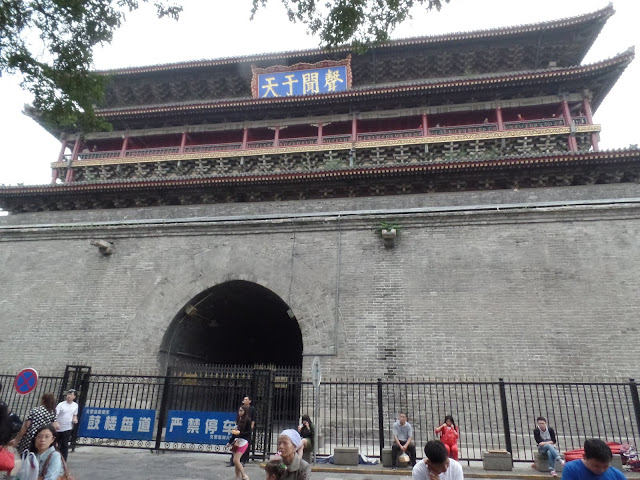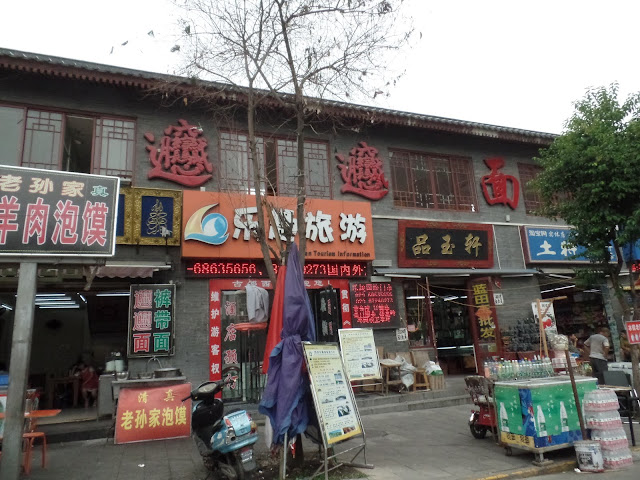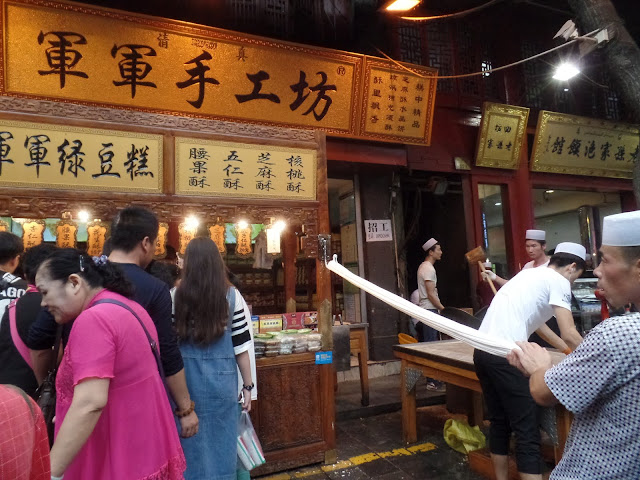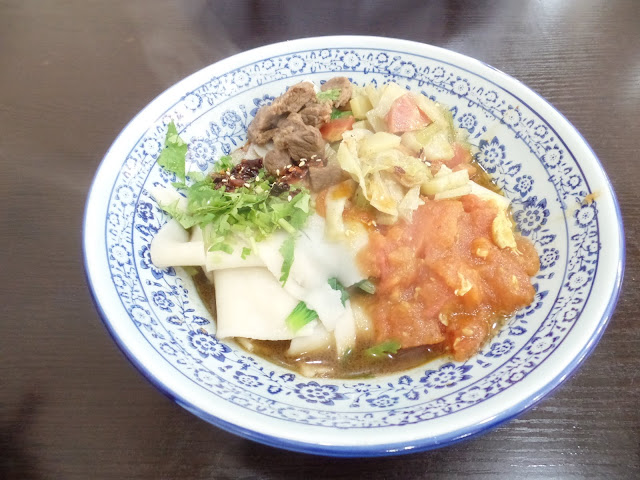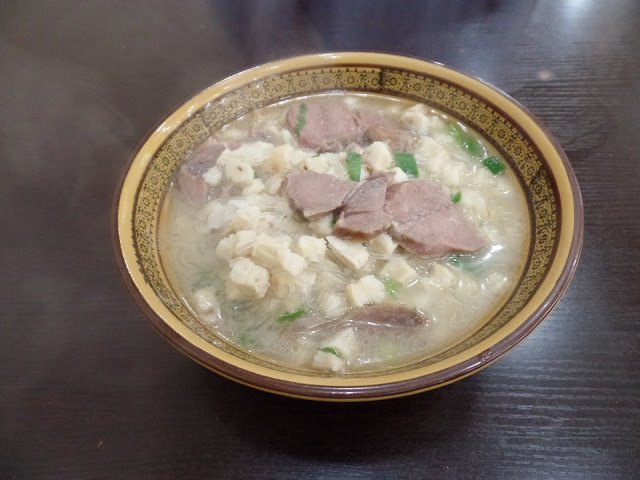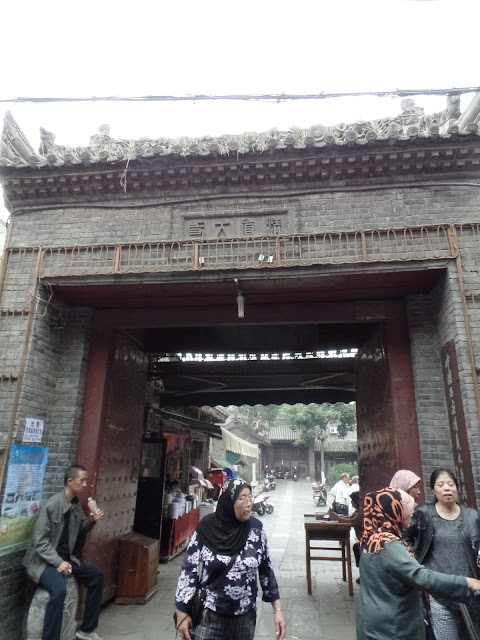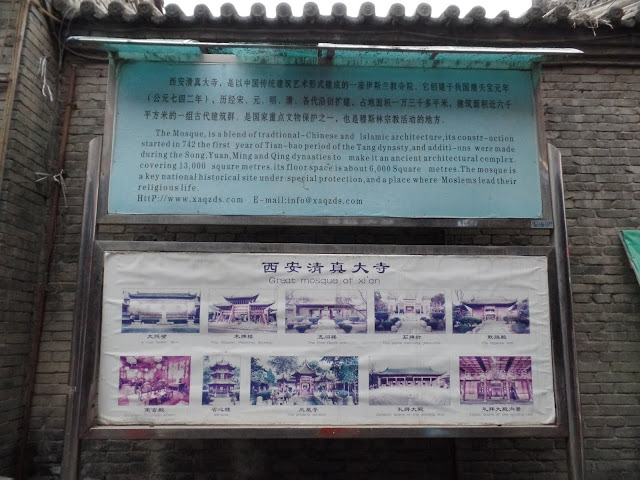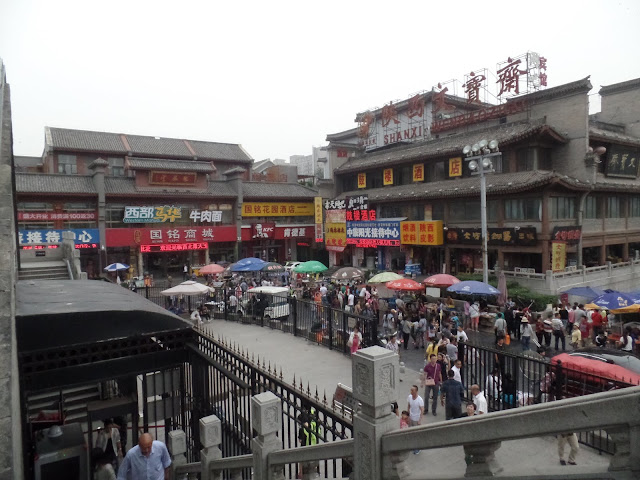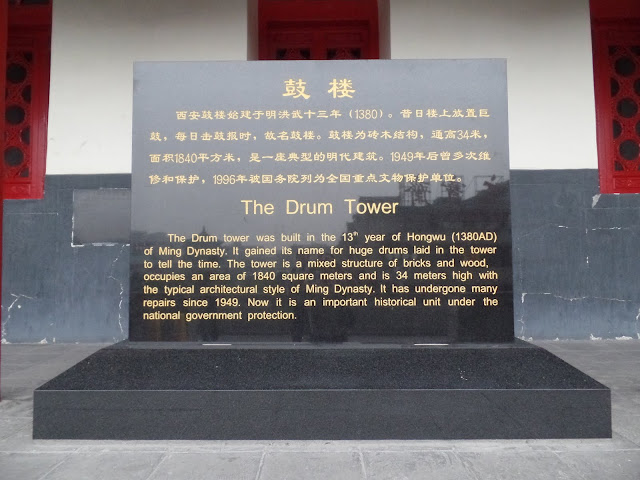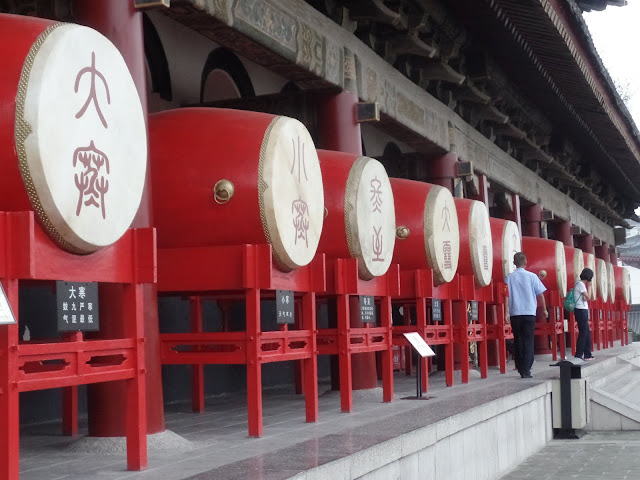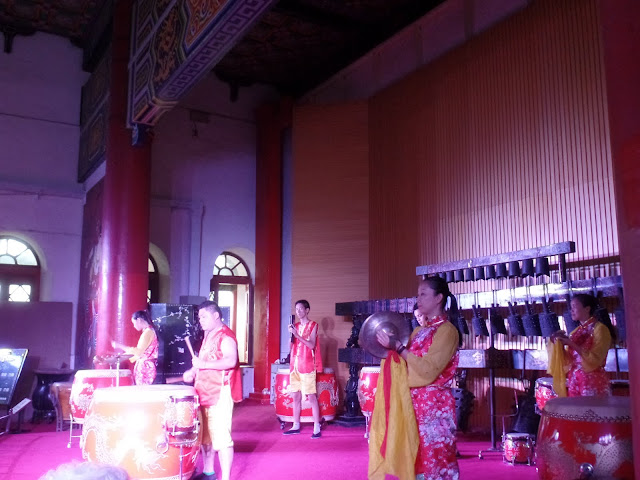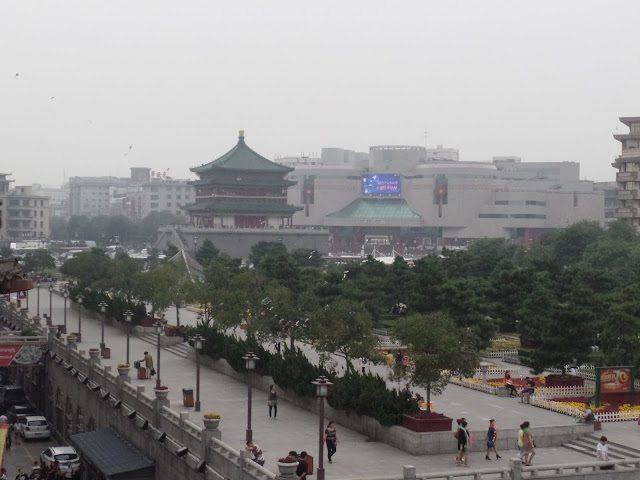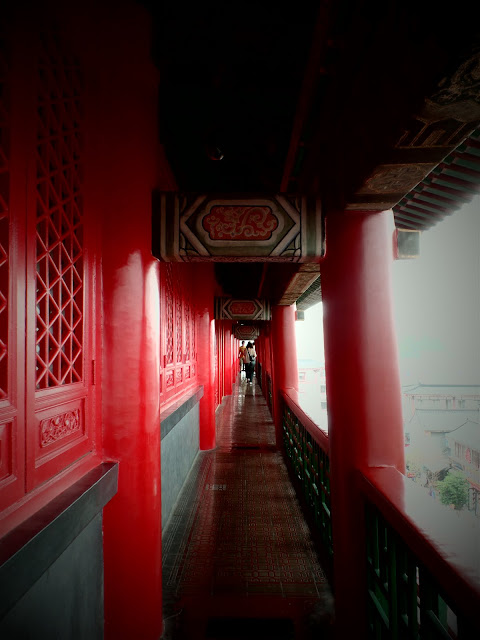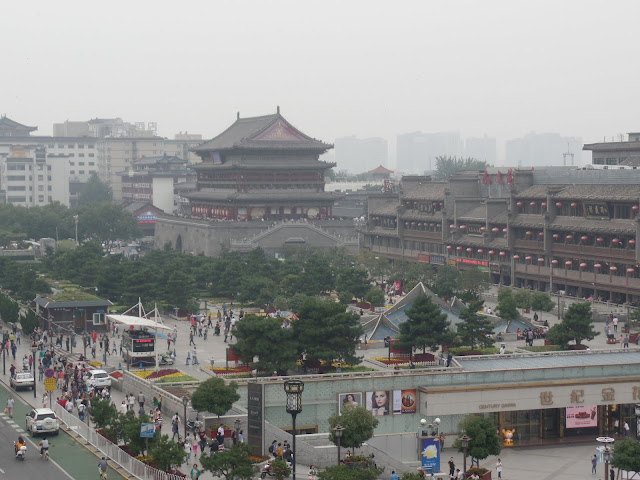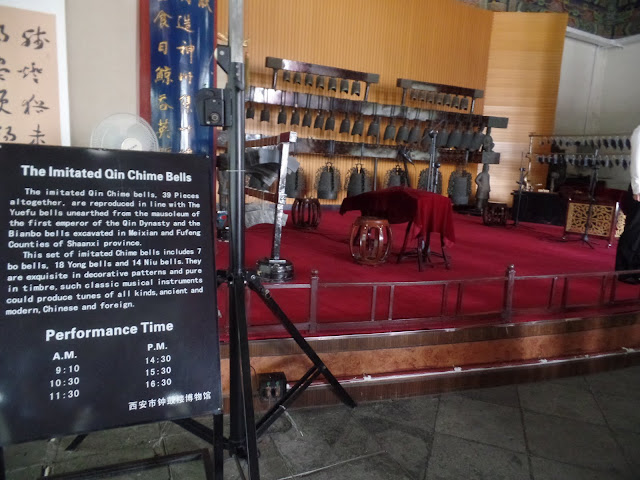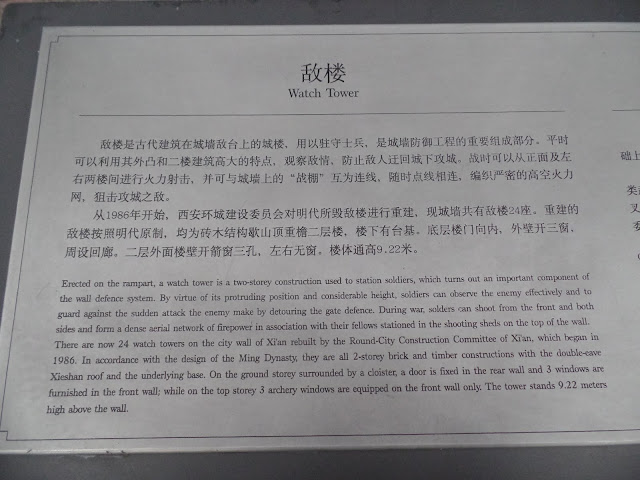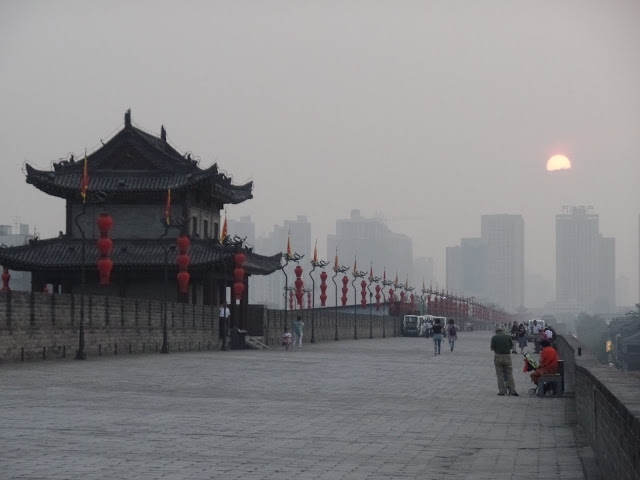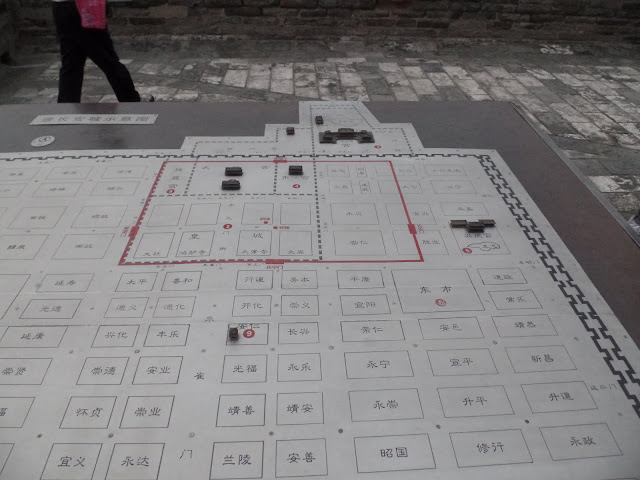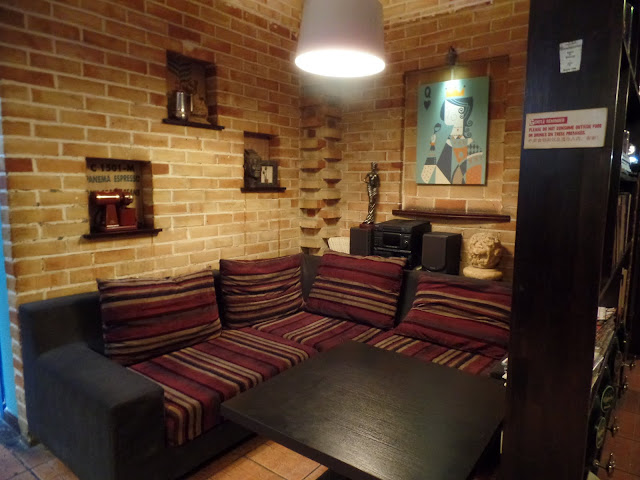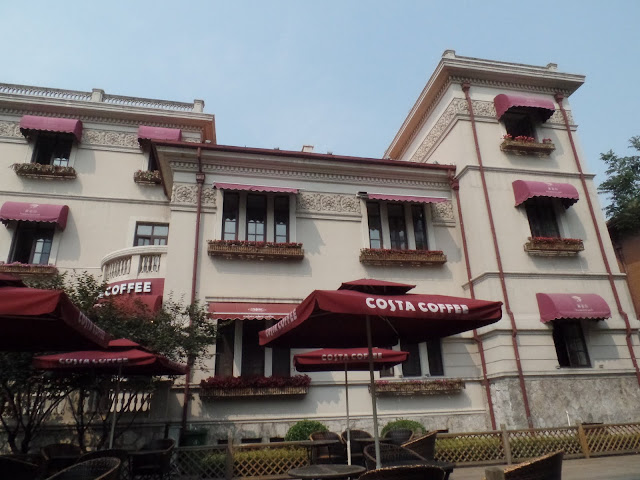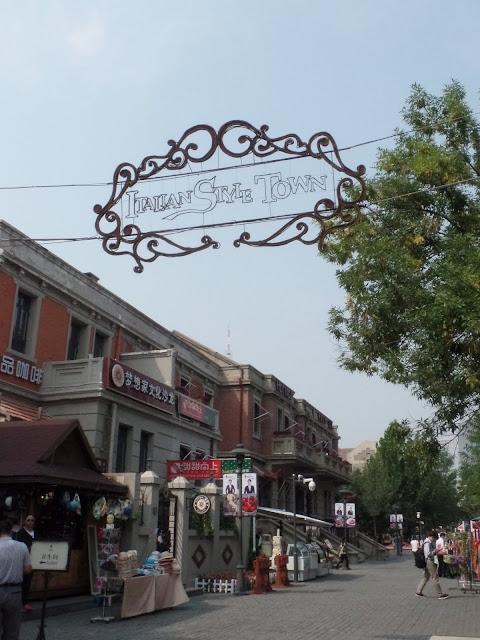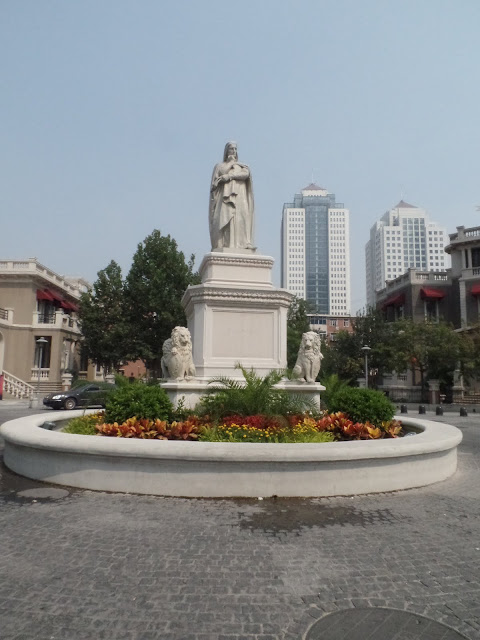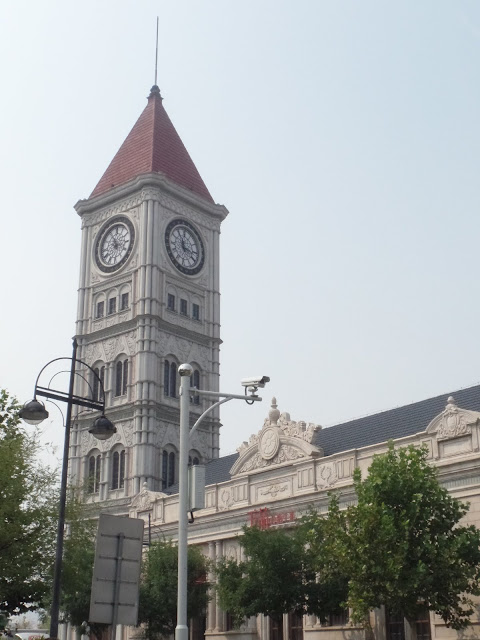Day 3
Day Trip to Tianjin (天津)
On the third day of our tour, we made a day trip to the city of Tianjin (天津) via the high speed train. Early in the morning, we took the MRT to Beijing South Railway Station (北京南). The MRT station is integrated to the railway station, but once we reached the railway station, it took us some time to navigate around since the whole place is big. We found the ticketing office and bought the 2nd class tickets for the next available timing. (Note that for foreigner, a passport is need to buy the train ticket, which would have your name printed on it). There's a high speed train service to Tianjin every 10 minutes, as such there's no need to pre-book. However at the same counter, we collected our
pre-booked high speed train tickets to Xi'an the following day. The railway station is very modern and the boarding process is in order. We need to show our passport along with our tickets before passing through the departure gantry.
 |
| High Speed Train - He Xie Hao |
This was the first time I traveled on a high speed train. The train is modern, clean and the leg space is reasonable. The journey to Tianjin took 33 minutes and traveled at an average speed of 300 km/hr. The train terminated at the Tianjin Railway Station (天津站), which is integrated to its Metro System. We switched to the Metro Line 2 and rode for 1 station to the Jianguodao Station (建国道).
Italian Style Town (意大利风情旅游区)
Nanshi Food Street (南市食品街)
Although it is termed as a food street, but in fact, what we saw is a 2 storey air-conditioned building.
 |
| Nanshi Food Street |
Inside, we could see the "street" filled with stalls selling all sorts of snacks. On the side of the streets are many Chinese restaurants and snack stores. There's also a MacDonald's fast food at one of the corner. Some of the famous Tianjin snacks sold here are the Gobuli Bun (狗不理包子), Fried Dough Twist 'Mahua' (麻花) and the Ear Hole Fried Cake 'Erduoyan Zhagao' (耳朵眼炸糕). We went to a restaurant and had Zhajiangmian (炸酱面). We actually wanted to order the Gobuli Bun (狗不理包子) as well, but it came with an minimum order of around 8-10 pieces. Thinking that it might be too much us, we decided not to order the buns. After the lunch, we had a short walk around the place before we set off to the Drum Tower (鼓楼) north of Nanshi Food Street (南市食品街).
Drum Tower (鼓楼)
The Drum Tower (鼓楼) was originally built in the Ming dynasty, then later destroyed during the Cultural Revolution and rebuilt again in recent years. Now it actually houses bells instead of drums.
 |
| Entrance to Gulou South Street towards Drum Tower |
 |
| Tianjin Drum Tower |
When we were there, it wasn't open for visit. As such, we only walked around the tower to take pictures. Around the tower, it's like a flea market where many vendors laid their merchandise on the ground. We did not spend too much time here and decided to go to our next destination. From the east side of the tower, we walk towards the Gulou East Street. Along the street, there are many shops selling antiques, furniture, calligraphy brushes, jewelry, souvenirs, and clothing. There are also restaurants and tea houses along the way. At the end of the street, we will pass by a Wen Miao Museum (文庙博物馆) honoring Confucius, which is also the best preserved ancient building in Tianjin. After this, another short walk brought us to the next destination, the Ancient Cultural Street (古文化街).
Ancient Cultural Street (古文化街)
This is another popular tourist attraction. The buildings along the streets are modeled after the Qing dynasty architectural style, which makes us feel like going back to the ancient time when walking around the area.
 |
| Southern entrance to the Ancient Cultural Street |
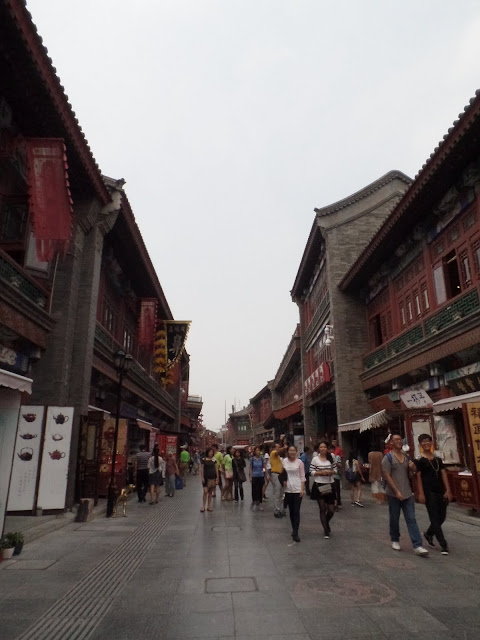 |
| Ancient Cultural Street View |
 |
| Building of Qing Architectural Style |
 |
| Center of the Ancient Cultural Street |
There are again shops selling tea sets, handicrafts, paintings, Chinese calligraphy accessories, souvenirs, boutique clothing, along with restaurants, snack stores, traditional tea houses and modern cafes. We started touring from the south entrance. The notable places in the area include the Tian Hou Palace (天后宫), dedicated to the goddess Mazu (妈祖), and the Clay Figure Zhang (泥人张) store, which sells traditional colourful clay figurines (a famous artwork in Tianjin).
 |
| Tian Hou Palace at Ancient Cultural Street |
We exited the place through the north entrance. We rested around the area and had bubble tea before we set off to return to Beijing. We strolled in the south direction along Dongma Road (东马路), towards the Dongnanjiao Station (东南角). Along the way, we could also find big shopping malls by the side. From Dongnanjiao Station (东南角), we took the Metro to Tianjin Railway Station (天津站), bought the train tickets and returned to Beijing by the high speed train. Overall, we had spent around 5 hours in Tianjin.
Quanjude Peking Roast Duck (全聚德 北京鸭烤)
Once we reached Beijing, we took the MRT to Qianmen Station (前门), where we headed to eat Quanjude (全聚德) Peking Roast Duck for the dinner. Peking Roast Duck is a must try dish while in Beijing, and it is also a national dish in China, where it is often served to foreign dignitaries during state banquets. Quanjude (全聚德) is the number one brand when it comes to Peking Roast Duck, having numerous branches within Beijing and other cities in China. From Qianmen Station (前门), we walked towards the Qianmen Street (前门大街), which is very long and wide pedestrian only street. Along the street are many restaurants and international boutique outlets, which the Quanjude (全聚德) Qianmen (前门) branch is one of it.
 |
| Quanjude Qianmen Branch |
The Qianmen (前门) branch is actually the original Quanjude (全聚德) store, thus we could expect a lot of crowd. When we reached the store, we were told that we have to wait up to 1.5 hours! We took the queue number and walked around the Qianmen Street (前门大街) first, before coming back to the store. By the time our queue number was called, it was already around 8pm and we were really hungry.
 |
| History of Quanjude |
 |
| View of the Kitchen |
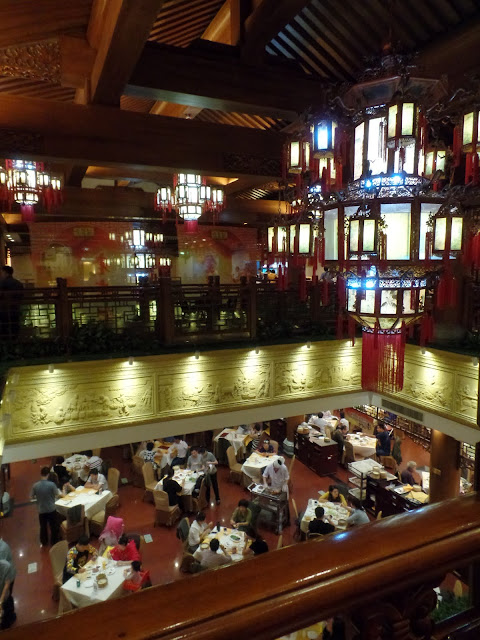 |
| Interior view of the restaurant |
We ordered half a duck and after some time, a chef pushed a cart with the hot roasted duck beside our table. He would sliced the duck in front of us and present the meat on the plate.
 |
| Chef slicing the Peking Roast Duck |
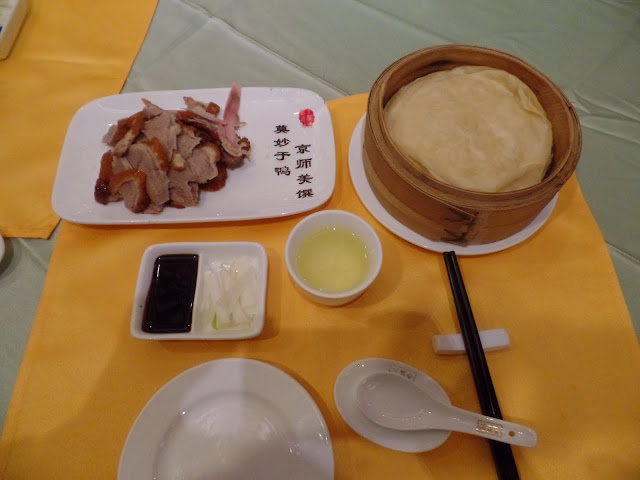 |
| Sliced Peking Roast Duck with the Pancake |
The staff was very friendly and he showed us the correct way of eating the dish by wrapping the thin slices of meat and the sweet bean sauce with the pancake. The thin slice of duck meat with the roasted skin was really juicy and tasty. The long wait for this dish was worthwhile. If we do order one whole duck, they will issue a certificate, but not for half a duck. After the dinner, it was already late. We went back to Qianmen Station (前门), took the MRT and back to our hotel.
Follow the links below to the other days of my China tour:



